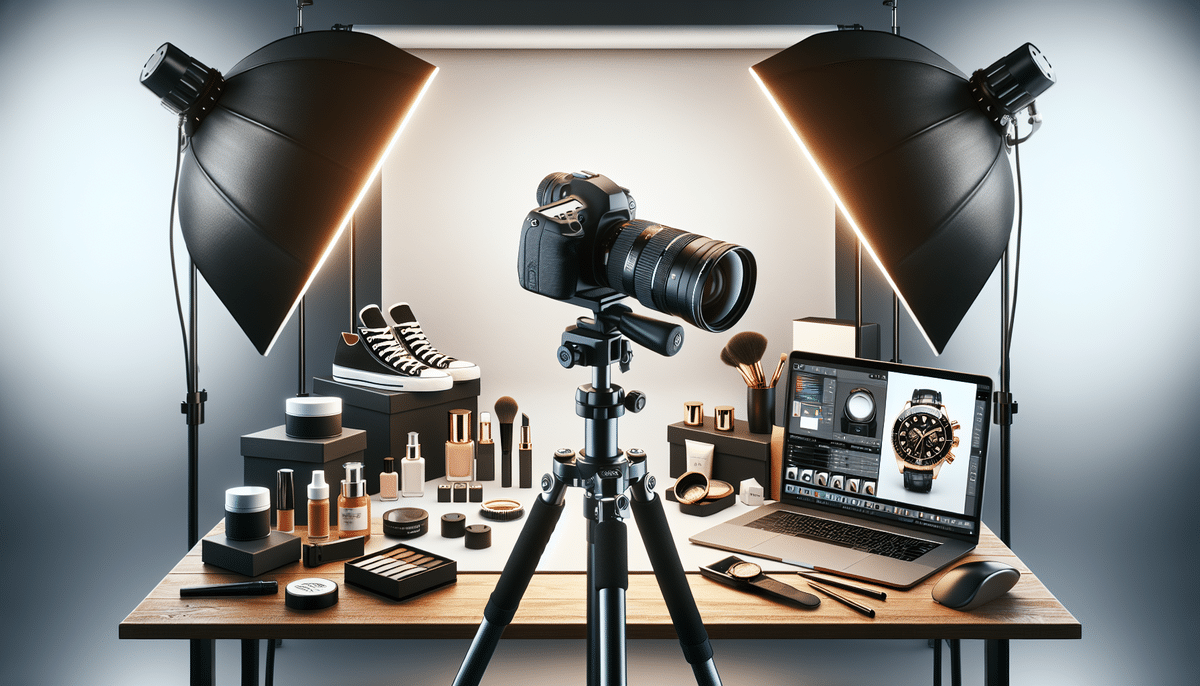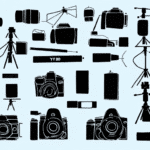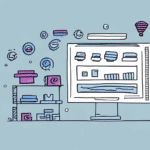A Complete Guide to Ecommerce Photography
In today's increasingly digital world, ecommerce has become an essential part of doing business. To succeed in ecommerce, it is crucial to have high-quality product photography that accurately showcases your products and entices customers to make a purchase. This complete guide to ecommerce photography explores everything you need to know about taking professional product photos that will help your ecommerce business thrive.
Why Ecommerce Photography is Important for Your Business
First and foremost, the product photos on your ecommerce store are often the first impression customers have of your products. They are key to capturing attention and convincing potential buyers. High-quality product photos are crucial for building customer trust, especially for online shoppers who cannot touch or examine products in person before making a purchase. According to a Shopify study, high-quality images can increase conversion rates by up to 30%. Professional ecommerce photography helps create a positive and credible image for your business, leading to increased sales and customer loyalty.
Secondly, ecommerce photography helps you stand out from your competitors. With many businesses selling similar products online, having eye-catching and unique product photos can make all the difference in attracting and retaining customers. By investing in professional ecommerce photography, you can showcase your products in a way that sets you apart and highlights your brand's unique selling points.
Lastly, ecommerce photography can improve your website's search engine optimization (SEO). By including descriptive alt tags and file names for your product photos, you help search engines understand your website's content and improve your chances of ranking higher in search results. This can lead to increased visibility and traffic to your ecommerce store, ultimately resulting in more sales and revenue for your business. For more on SEO best practices, visit the Ship Science SEO Guide.
The Benefits of Professional Ecommerce Photography
Professional ecommerce photography offers several benefits to businesses:
- Enhanced Product Appeal: Professional photos showcase your products in the best possible light, improving their perceived value and making them more attractive to potential customers.
- Increased Sales: High-quality images can lead to higher conversion rates and increased sales.
- Improved Brand Credibility: Consistent, professional photos build trust and credibility with your audience.
- Time and Cost Efficiency: Professional photographers provide optimized images, reducing the need for costly and time-consuming retakes or edits.
By investing in professional photography, businesses can expect increased sales, higher conversion rates, and improved brand credibility.
Different Types of Ecommerce Photography and Their Importance
There are several types of ecommerce photography that businesses should consider:
- Standard Product Shots: Simple images on white or neutral backgrounds that focus solely on the product.
- Close-Up Shots: Highlight specific details and features of the product.
- Lifestyle Shots: Show the product in a real-life setting, helping customers visualize its use.
- 360-Degree Photography: Allows customers to view the product from all angles, providing a more immersive experience.
Each type serves a unique purpose and can enhance the shopping experience in different ways. For example, lifestyle photos create an aspirational feel, while 360-degree photography can reduce return rates by giving customers a better understanding of the product before purchase.
Best Practices for Ecommerce Product Photography
When it comes to ecommerce product photography, adhering to best practices ensures your images effectively showcase your products:
- Use High-Quality Equipment: Invest in good cameras, lenses, and lighting to capture sharp and clear photos.
- Maintain Consistency: Ensure all product photos have a similar style and lighting for a cohesive look across your store.
- Neutral Backgrounds: Use white or light gray backgrounds to keep the focus on the product.
- Optimize for Web: Compress images to ensure fast loading speeds without compromising quality.
- Show Different Angles: Provide multiple perspectives to help customers fully understand the product.
- Incorporate Lifestyle Images: Show the product in use to help customers visualize its application.
By following these best practices, businesses can create high-quality ecommerce product photos that enhance the user experience and drive sales.
Understanding Lighting and Its Impact on Ecommerce Photography
Lighting is one of the most critical factors in ecommerce product photography. Proper lighting can make your product look vibrant and appealing:
- Consistent Lighting: Ensure that all product photos have uniform lighting to maintain a cohesive appearance.
- Natural Lighting: Ideal for creating a soft and realistic look, but may require careful control to avoid harsh shadows.
- Studio Lighting: Provides greater control over light sources, reducing shadows and glare.
According to the Photography Magazine, consistent and well-planned lighting can increase product attractiveness by up to 42%. It's essential to experiment with different lighting setups to find what best highlights your products.
Choosing the Right Camera and Equipment for Ecommerce Photography
Investing in the right camera and equipment is crucial for capturing high-quality ecommerce product photos:
- Camera: A high-resolution camera with good autofocus capabilities ensures clear and sharp images.
- Lens: A macro lens is ideal for close-up shots and capturing intricate details.
- Tripod: Helps keep the camera steady, reducing blur and ensuring consistency across shots.
- Lighting Equipment: Studio lights, softboxes, and diffusers help achieve optimal lighting conditions.
Additionally, tools like photo editing software are essential for post-processing images to enhance quality and consistency.
Tips and Techniques for Styling Your Products for Ecommerce Photography
Styling products effectively can make your ecommerce photos more compelling:
- Use Complementary Colors: Choose colors that enhance the product and create visual harmony.
- Incorporate Props: Use relevant props to highlight product features and context.
- Experiment with Angles: Capture products from various perspectives to provide a comprehensive view.
- Use Models or Mannequins: For clothing and accessories, showcasing fit and sizing accurately can boost customer confidence.
Ensuring that the product remains the focus while styling enhances its appeal without distracting the customer is key to effective ecommerce photography.
How to Edit Ecommerce Product Photos Like a Pro
Image editing is an essential step in ecommerce product photography:
- Adjust Lighting and Color: Enhance brightness, contrast, and color balance to accurately represent the product.
- Remove Blemishes: Clean up any imperfections to present a polished image.
- Ensure Consistency: Apply similar editing techniques across all product photos for a uniform look.
- Optimize File Size: Compress images without losing quality to improve website loading times.
Tools like Adobe Photoshop and Lightroom are popular choices for professional photo editing. It's important to avoid over-editing to maintain a realistic and trustworthy representation of your products.
Creating a Consistent Look and Feel Across Your Ecommerce Store with Photography
Consistency in photography helps build brand recognition and credibility:
- Uniform Style: Maintain a consistent style, lighting, and background across all product photos.
- Brand Alignment: Ensure that photography aligns with your brand’s aesthetics and values.
- Website Integration: Match photography style with website design elements like fonts and color palettes.
A consistent look and feel create a memorable and engaging shopping experience, encouraging repeat visits and customer loyalty.
How to Use Ecommerce Product Photos to Boost Sales
High-quality ecommerce product photos can significantly boost sales and improve conversion rates:
- Accurate Representation: Clear and detailed images help customers make informed purchase decisions.
- Marketing Integration: Use product photos in social media, email campaigns, and advertisements to attract new customers.
- Highlight Features: Showcase key product features and benefits through focused imagery.
According to a Ship Science report, products with high-quality images are 3.5 times more likely to convert visitors into buyers. Investing in professional ecommerce photography is an investment in the success of your business.
Best Tools and Software for Managing Your Ecommerce Photography Workflow
Managing an efficient ecommerce photography workflow is essential for maintaining consistency and quality:
- Product Photography Software: Tools like Capture One allow for efficient batch editing and color correction.
- Ecommerce Platforms: Platforms such as Shopify offer built-in tools for managing and organizing product photos.
- Digital Asset Management (DAM) Systems: Use DAM systems to store, organize, and retrieve images easily.
These tools help streamline the photography process, ensuring that your product images are consistently high-quality and well-organized.
Outsourcing vs In-House: Which is the Right Choice for Your Ecommerce Photography Needs?
Deciding whether to outsource ecommerce photography or handle it in-house depends on several factors:
- Expertise: Outsourcing allows access to professional photographers with specialized skills.
- Control and Flexibility: In-house photography provides greater control over the process and can be more flexible for ongoing needs.
- Cost: Outsourcing may involve higher upfront costs, while in-house can be more cost-effective in the long term.
- Scalability: Outsourcing can be more scalable for businesses with fluctuating photography needs.
Ultimately, the choice depends on your business’s individual needs, resources, and long-term goals. A hybrid approach, combining both outsourcing and in-house efforts, can also be effective.
Common Mistakes to Avoid in Ecommerce Product Photography
Avoiding common mistakes ensures your ecommerce product photos are effective and professional:
- Inconsistent Lighting: Varying lighting can create a disjointed look across your store.
- Poor Composition: Cluttered or poorly framed images can distract from the product.
- Distracting Backgrounds: Busy or inappropriate backgrounds can take focus away from the product.
- Inaccurate Colors: Ensure colors are true to life to avoid misleading customers.
- Low Resolution: Blurry or pixelated images reduce the perceived quality of your products.
By adhering to best practices and avoiding these pitfalls, businesses can create high-quality ecommerce product photos that effectively showcase their products.
Future Trends in Ecommerce Photography: What to Expect
As technology advances, ecommerce photography is evolving to meet new consumer expectations:
- 360-Degree Product Photos and Videos: Offering interactive views that allow customers to explore products from all angles.
- Augmented Reality (AR): Enabling customers to visualize how products will look and fit in real-world settings.
- AI and Machine Learning: Enhancing image editing processes and personalizing product displays based on customer behavior.
- Virtual Reality (VR) Showrooms: Creating immersive shopping experiences where customers can interact with products virtually.
These technological advancements will continue to shape ecommerce photography, improving the shopping experience and enabling businesses to better showcase and sell their products.
By following the best practices outlined in this guide and investing in high-quality professional ecommerce photography, businesses can set themselves apart from the competition and succeed in the ever-growing ecommerce space.






















